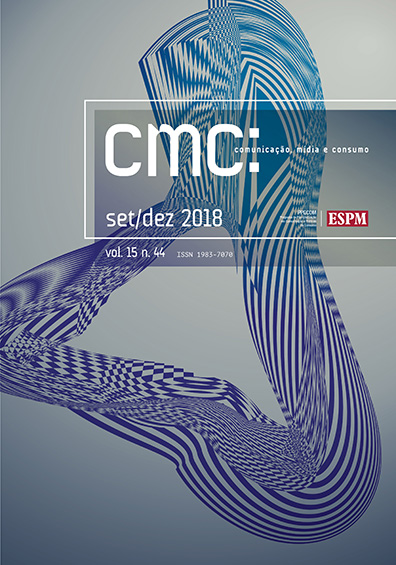A streetcar named consumption, an object named desire
DOI:
https://doi.org/10.18568/cmc.v15i44.1513Palavras-chave:
design, props, desire, consumption, Pierre BourdieuResumo
The focus of the present article is the Design Field inserted into the Cinema Field and its intervention in the production of props for Hollywood movies, which are desired by consumers after. The Nike Air Mag sneakers, for example, worn by the character Marty McFly in the movie Back to the future part II, created a sort of countdown by viewers for its launch. In 2011, Nike launched it on the market in a limited number of only one thousand and five hundred units in a virtual auction whose initial bid was five thousand and five hundred dollars. All pairs were sold quickly. Our goal is to understand the consumption of such props based on the theory of symbolic exchanges developed by Pierre Bourdieu.Downloads
Referências
BOMFIM, G. A. Coordenadas cronológicas e cosmológicas como espaço das transformações formais. In: NOVAES, L. (Org.). Formas do design: por uma metodologia interdisciplinar. Rio de Janeiro: Rio Books, 2014. p. 13-28.
BOURDIEU, P. A sociologia de Pierre Bourdieu. ORTIZ, R. (Org.). São Paulo: Ática, 1983.
FORTY, A. Objetos de desejo. Cameron Books, 1986. São Paulo: Cosac Naify, 2007.
HAMBURGER, V. Arte em cena: a direção de arte no cinema brasileiro. São Paulo: Senac-Sesc, 2014.
LOBRUTTO, V. The filmmaker’s guide to Production Design. New York: Allworth Press, 2002.
MASSEY, A. Hollywood beyond the screen: design and material culture. Oxford / New York: Berg, 2000.
PAPANEK, V. Design for the real world. New York: Batam Books, 1973.
PRESTON, W. What an Art Director does: an introduction to Motion Picture Production Design. Los Angeles: Silman-James Press, 1994.







